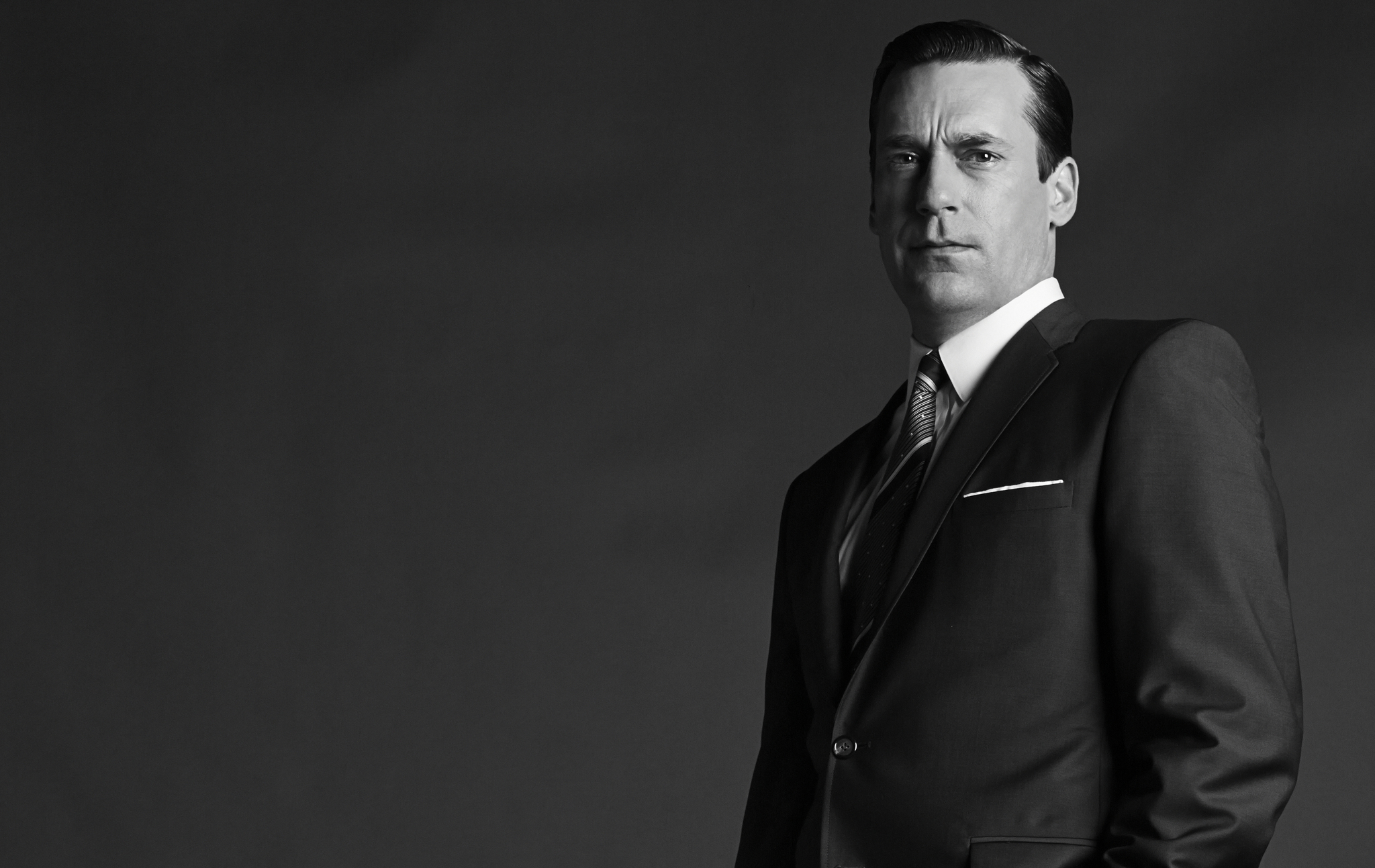 Don Draper is a philanderer. He philanders. And though the reasons for his philandering are varied, Mad Men creator Matthew Weiner may have put his finger on it when he said, “I think Don likes longing more than he likes people who love him … His lack of loyalty runs deep because he doesn’t like the people who know him.” That is to say, we hurt the ones we love the most, but Don Draper seems intent upon punishing them. His weapon of choice: an ongoing cycle of adultery. His line of defense: implausible deniability.
Don Draper is a philanderer. He philanders. And though the reasons for his philandering are varied, Mad Men creator Matthew Weiner may have put his finger on it when he said, “I think Don likes longing more than he likes people who love him … His lack of loyalty runs deep because he doesn’t like the people who know him.” That is to say, we hurt the ones we love the most, but Don Draper seems intent upon punishing them. His weapon of choice: an ongoing cycle of adultery. His line of defense: implausible deniability.
As a character, Don is smart, arrogant, incredibly assured. He is wealthy, handsome … the consummate lover. Don is enough of the things that women want and men want to be that, as an audience, we tend to excuse all of his inequities. This, of course, carries over into everyday life – a capitalist culture in which rich, attractive, button-up types tend to walk all over hoi polloi.
Throughout Mad Men‘s six-and-a-half seasons, we’ve gotten to know Don, in large part, as a result of his affairs. We see Don reflected in shattered pieces of the lovers he has left behind. In ranking them, there was no consideration given to platonic relationships (no Joan or Peggy), no exceptions made for one-night stands or supernumeraries. What remains are eight eclectic women, each of them listed below based on intrigue, as well as what level of drama their interaction with Don has provided during the show:
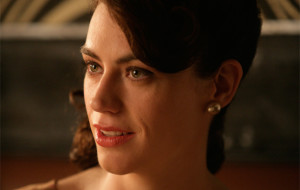 1. Rachel Menken (The Heiress). Rachel Menken is Don Draper’s intellectual equal, and – in many ways – his better. She matches him barb for barb, schooling Don in one beautifully-realized moment on the derivation of Utopia. “The Greeks had two meanings for it,” Menken explains, “eu-topos, meaning ‘the good place,’ and ou-topos, meaning ‘the place that cannot be.’” Menken is self-confident (like Don), business-savvy (like Don), and motherless (like Don). She is also Jewish, representing a major taboo for 1960s America. The couple’s fallout costs Sterling Cooper Menken’s business. Bert Cooper, Mad Men‘s hidden jewel, informs Don of this, reprimanding him for whoring out Receivables: “As a partner, I do not expect your personal preferences to interfere.” When Menken reappears (albeit briefly) during the second season, her presence renders Draper peaked. Rachel – accompanied by her new husband, Tilden Katz – is on her way to see “A Funny Thing Happened”. Don, on the other hand, is getting day-drunk in Sardi’s with a business associate’s wife.
1. Rachel Menken (The Heiress). Rachel Menken is Don Draper’s intellectual equal, and – in many ways – his better. She matches him barb for barb, schooling Don in one beautifully-realized moment on the derivation of Utopia. “The Greeks had two meanings for it,” Menken explains, “eu-topos, meaning ‘the good place,’ and ou-topos, meaning ‘the place that cannot be.’” Menken is self-confident (like Don), business-savvy (like Don), and motherless (like Don). She is also Jewish, representing a major taboo for 1960s America. The couple’s fallout costs Sterling Cooper Menken’s business. Bert Cooper, Mad Men‘s hidden jewel, informs Don of this, reprimanding him for whoring out Receivables: “As a partner, I do not expect your personal preferences to interfere.” When Menken reappears (albeit briefly) during the second season, her presence renders Draper peaked. Rachel – accompanied by her new husband, Tilden Katz – is on her way to see “A Funny Thing Happened”. Don, on the other hand, is getting day-drunk in Sardi’s with a business associate’s wife.
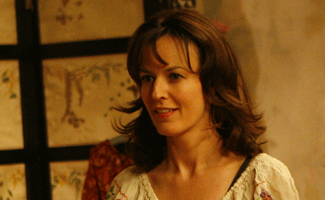 2. Midge Daniels (The Bohemian). Midge was there at the beginning, screwing Don Draper in the pilot. Her character represents a signpost, indicative of the Village counterculture just before the scene exploded. Sex, drugs, Fidel Castro and the Gaslight, all of them converging along a tiny stretch of Babylon. Before the dust settled, 10,000 hippies wound up waylaid; used up, then torn down, their early optimism removed. By Season Four, Midge is reduced to soliciting charity from the very corporate structure she abhors. Midge has become a junkie, and Don Draper reeks of money. Their final exchange stands as a testament to just how far the 60s experiment has fallen.
2. Midge Daniels (The Bohemian). Midge was there at the beginning, screwing Don Draper in the pilot. Her character represents a signpost, indicative of the Village counterculture just before the scene exploded. Sex, drugs, Fidel Castro and the Gaslight, all of them converging along a tiny stretch of Babylon. Before the dust settled, 10,000 hippies wound up waylaid; used up, then torn down, their early optimism removed. By Season Four, Midge is reduced to soliciting charity from the very corporate structure she abhors. Midge has become a junkie, and Don Draper reeks of money. Their final exchange stands as a testament to just how far the 60s experiment has fallen.
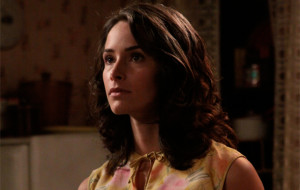 3. Suzanne Farrell (The Teacher). At one point Don lies in bed with Suzanne, imagining what it would have been like if he had known her as a child. There is a playfulness between the two. Farrell is poor, and naive, and she lives in a tiny apartment over the top of a garage. She bakes bread for Don, she answers the door wearing a gold star, one of their first meetings takes place inside a classroom, with Suzanne playing the teacher and Don Draper, the role of student. Suzanne is hiding in Don’s Cadillac on the morning Betty confronts Don regarding his identity, ducking like a teenager beneath the dash to avoid being spotted. And then, one phone call later, the entire Suzanne love affair is over, set aside much like Don’s past to ensure a more convenient future.
3. Suzanne Farrell (The Teacher). At one point Don lies in bed with Suzanne, imagining what it would have been like if he had known her as a child. There is a playfulness between the two. Farrell is poor, and naive, and she lives in a tiny apartment over the top of a garage. She bakes bread for Don, she answers the door wearing a gold star, one of their first meetings takes place inside a classroom, with Suzanne playing the teacher and Don Draper, the role of student. Suzanne is hiding in Don’s Cadillac on the morning Betty confronts Don regarding his identity, ducking like a teenager beneath the dash to avoid being spotted. And then, one phone call later, the entire Suzanne love affair is over, set aside much like Don’s past to ensure a more convenient future.
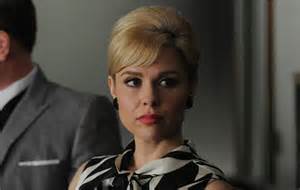 4. Faye Miller (The Psychoanalyst). Dr. Miller and Don Draper never had a chance. Her insights prove too sharp and her curiosity too deep to keep Don Draper’s skeletons at bay. During their first encounter, Dr. Miller asks Don to fill out a questionnaire regarding his childhood; during their second, Faye refers to Don as a “type”. Don admires Faye, which explains why he cannot risk having her in his life. Dr. Miller displays very little in the way of subservience, and while the character seems tailor-made for heightened tension, almost none of that materializes. Within a year of meeting Faye, Don gets engaged to his secretary – a development which Faye predicted during the week that she and Don first met. “I hope [Megan] knows you only like the beginning of things,” Faye tells Don over the phone. As usual, her assessment eventually proves to be correct.
4. Faye Miller (The Psychoanalyst). Dr. Miller and Don Draper never had a chance. Her insights prove too sharp and her curiosity too deep to keep Don Draper’s skeletons at bay. During their first encounter, Dr. Miller asks Don to fill out a questionnaire regarding his childhood; during their second, Faye refers to Don as a “type”. Don admires Faye, which explains why he cannot risk having her in his life. Dr. Miller displays very little in the way of subservience, and while the character seems tailor-made for heightened tension, almost none of that materializes. Within a year of meeting Faye, Don gets engaged to his secretary – a development which Faye predicted during the week that she and Don first met. “I hope [Megan] knows you only like the beginning of things,” Faye tells Don over the phone. As usual, her assessment eventually proves to be correct.
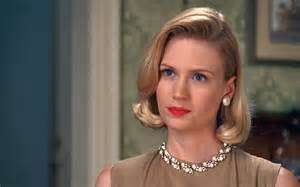 5. Betty Draper (The Cotillion Queen). Betty Draper has one gear, and while it’s consistent with Don’s preferences, it also sucks the air out of a room. As Season One evolves, it becomes clear Betty is suffering from some form of arrested development (among other things). What remains unclear is how much Don has exacerbated the situation. When Betty first married Don, she was an aspiring model with a gorgeous house out in the suburbs. By the point of their divorce, she’s been reduced to little more than an ornament. Perhaps most hurtful is the fact that Don sent Betty to a psychiatrist, who reported all his findings back to Don. Add that to the frequency and audacity of Don’s lies and it just might be enough to drive any woman insane.
5. Betty Draper (The Cotillion Queen). Betty Draper has one gear, and while it’s consistent with Don’s preferences, it also sucks the air out of a room. As Season One evolves, it becomes clear Betty is suffering from some form of arrested development (among other things). What remains unclear is how much Don has exacerbated the situation. When Betty first married Don, she was an aspiring model with a gorgeous house out in the suburbs. By the point of their divorce, she’s been reduced to little more than an ornament. Perhaps most hurtful is the fact that Don sent Betty to a psychiatrist, who reported all his findings back to Don. Add that to the frequency and audacity of Don’s lies and it just might be enough to drive any woman insane.
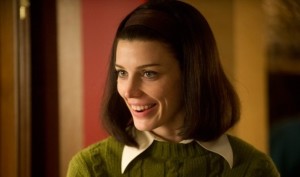 6. Megan Draper (The Actress). Whether it’s planning a surprise party, or serenading Don to “Zou Bisou Bisou,” or perhaps even welcoming a third party into the bedroom, one is consistently confronted with the notion Megan Draper (nee Calvet) doesn’t really get her husband. And that Don, in turn, views Megan’s attempts at doing so as desperate. Don’s second marriage is indicative of his constant need to find a mother, if only to belittle her until she turns away. Once Megan’s career begins to blossom (thanks to Don), it’s as if he’s competing to see who can abandon who first. “That’s what happens when you help someone,” Don tells Peggy toward the end of Season Five. “They succeed and move on.” This from a man whose entire freedom hinges upon one widow’s decision to stand by him, despite the fact he has stolen her missing husband’s identity.
6. Megan Draper (The Actress). Whether it’s planning a surprise party, or serenading Don to “Zou Bisou Bisou,” or perhaps even welcoming a third party into the bedroom, one is consistently confronted with the notion Megan Draper (nee Calvet) doesn’t really get her husband. And that Don, in turn, views Megan’s attempts at doing so as desperate. Don’s second marriage is indicative of his constant need to find a mother, if only to belittle her until she turns away. Once Megan’s career begins to blossom (thanks to Don), it’s as if he’s competing to see who can abandon who first. “That’s what happens when you help someone,” Don tells Peggy toward the end of Season Five. “They succeed and move on.” This from a man whose entire freedom hinges upon one widow’s decision to stand by him, despite the fact he has stolen her missing husband’s identity.
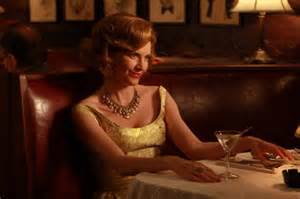 7. Bobbie Barrett (The Whore). One immediately gets the sense Don Draper is fighting Bobbie Barrett every step of the way, that – at least for him – any physical relationship with an aging, former stripper equates to slumming it, regardless of her current status. It is Bobbie who comes on to Don, Bobbie who continues the pursuit, Bobbie who initiates sex in Don’s office during business hours. Bobbie Barrett is a passing fancy, yet inserting her into Don’s schedule allows for one of the most grating insults Don Draper has ever been made to endure. “You’re garbage, and you know it,” Bobbie’s husband tells Don during a black-tie function. It is the only point in the series when we get to see an angry spouse confront Don, and it illuminates a point of view that’s overwhelmingly ignored.
7. Bobbie Barrett (The Whore). One immediately gets the sense Don Draper is fighting Bobbie Barrett every step of the way, that – at least for him – any physical relationship with an aging, former stripper equates to slumming it, regardless of her current status. It is Bobbie who comes on to Don, Bobbie who continues the pursuit, Bobbie who initiates sex in Don’s office during business hours. Bobbie Barrett is a passing fancy, yet inserting her into Don’s schedule allows for one of the most grating insults Don Draper has ever been made to endure. “You’re garbage, and you know it,” Bobbie’s husband tells Don during a black-tie function. It is the only point in the series when we get to see an angry spouse confront Don, and it illuminates a point of view that’s overwhelmingly ignored.
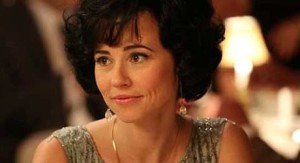 8. Sylvia Rosen (The Neighbor). As Don stumbles toward mid-life, his choice of mistress suggests a need to injure those who are closest, most notably his second wife. What’s more, the deeper Sylvia – Don and Megan’s downstairs neighbor – falls for Don, the more cruelly Don treats both women in return. It is only when Sylvia breaks off the affair that Don realizes he is in love. Operating on unprecedented levels of self-loathing, Don eventually winds up getting caught with his pants down.
8. Sylvia Rosen (The Neighbor). As Don stumbles toward mid-life, his choice of mistress suggests a need to injure those who are closest, most notably his second wife. What’s more, the deeper Sylvia – Don and Megan’s downstairs neighbor – falls for Don, the more cruelly Don treats both women in return. It is only when Sylvia breaks off the affair that Don realizes he is in love. Operating on unprecedented levels of self-loathing, Don eventually winds up getting caught with his pants down.
